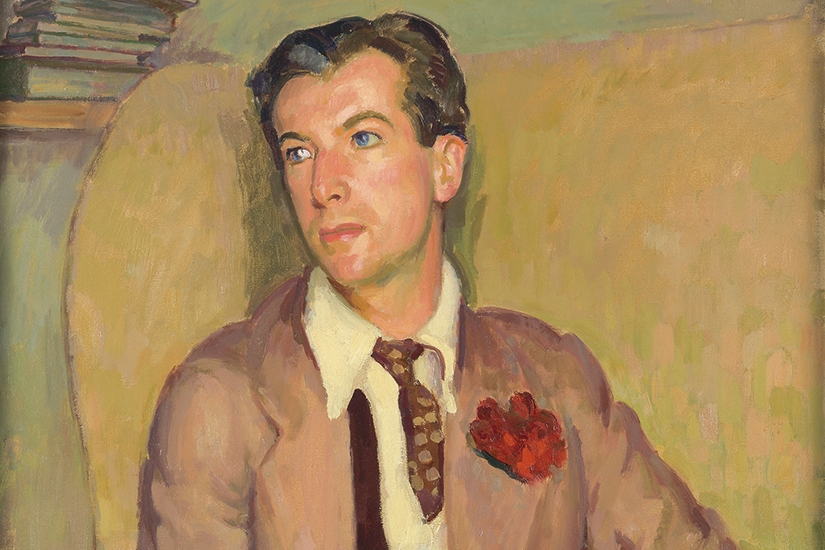In December 1979, the 28-year-old Hugo Vickers, dining with a friend, declared: ‘I see little point to life these days.’ The following day, an editor at Weidenfeld & Nicolson rang to tell him that Cecil Beaton, seriously debilitated by a stroke, was looking for a biographer. Vickers visited Beaton three days before his death in January 1980 and, shortly afterwards, was confirmed as his official biographer. This was to give point, along with glamour and excitement, to his life for the next five years.
Beaton’s sister, Lady Smiley, exhorted Vickers not to make it ‘one of those gossipy books. There’s so much more.’ He followed her counsel and his biography is both a measured account of Beaton’s myriad achievements as photographer, painter, designer and memoirist and a rounded portrait of his rich and at times rackety life. Thirty-six years on, Vickers has published the diaries written during his research for the book, in which gossip abounds.
Beaton himself was an astute, if waspish, diarist, who offended many by publishing six volumes of diaries in his lifetime. It was said that the Queen Mother failed to send a representative to his memorial service because she took offence at his description of her teeth. Vickers has wisely resisted publication of his own diaries until all the principal figures are dead. He can therefore remark with impunity on the art historian John Richardson’s sadism, Laurence Olivier’s lament for his small penis and Enid Bagnold’s removal of her catheter at the lunch table.
‘You do have the most unphotogenic face I have ever seen,’ Beaton told the young Julie Andrews
The range of Beaton’s activities may have led him to dilute his talents, but it introduced him to a far wider society than if he’d confined himself to one art form. So, Vickers encounters royalty, including the Queen Mother, whose wartime image Beaton played a large part in crafting. He visits the last of the Bright Young People, whom Beaton photographed in the 1920s, including Stephen Tennant, a portly recluse in his Wiltshire manor, and the Jungman sisters, once beloved by Evelyn Waugh, now fallen on hard times. He enters the world of fashion through the legendary Vogue editor Diana Vreeland, and the dress designer Valentina, drugged but undaunted, who is afforded the most touching portrait in the book.
Vickers becomes a regular guest at aristocratic cocktail and house parties, and at times it is hard to tell the Lauras from the Loelias. He strikes genuine friendships with two of his hostesses. The first is Lady Diana Cooper, once described as ‘the least dumb blonde’, who greets him in bed, having instructed her maid to tell him not to look at her too closely, and whom he subsequently squires around town. The second is the 60-year-old Clarissa Avon, the widow of Anthony Eden, with whom his growing intimacy fuels rumours of an impending marriage.
The abiding theme of the interviews is Beaton’s love life, and Vickers himself is surprised by the extent of his heterosexual liaisons with, among others, the actresses Coral Browne and Merle Oberon. Prominent among these female lovers was the socialite Doris Castlerosse, who famously declared: ‘There is no such thing as an impotent man, only an incompetent woman.’ She subsequently had an affair with Robert Heber Percy, Lord Berners’s one-time boyfriend, for whom Beaton nursed an unrequited passion. For his birthday, she took him to a brothel in Paris and paid for him
to whip a naked whore to death. He gave a couple of disconsolate taps. Doris then said: ‘I haven’t wasted my money just for this’, and delivered a welt-raising cut.
The diaries are full of such scurrilous stories, graciously told. Despite the title (a nod to Cocteau), there is surprisingly little malice in the book, with even Beaton’s enemies, notable among them the theatrical producer Irene Selznick, preferring to lay their quarrels to rest. Of Beaton’s own malice, the most egregious example is his claim to the young Julie Andrews: ‘You do have the most unphotogenic face I have ever seen.’
Vickers repeatedly marvels at his good fortune in meeting so many luminaries, and the reader also delights in encountering them through his pages. It is not an analytical book, but it offers glimpses into the biographer’s art and the difficulty of weighing up contradictory evidence, in particular regarding Beaton’s reputed affair with Garbo, who, true to her legend, eludes Vickers. Some observers, such as the photographer Irving Penn, maintained that theirs was ‘a troubled brother and sister relationship’, while others, including Beaton’s close friend Truman Capote, insisted that they were lovers.
Chips Channon, who knew whereof he spoke, once asked: ‘What can be more dull than a discreet diary?’ Vickers’s diaries bristle with judicious indiscretion. Beaton himself was one of the finest 20th-century diarists. It is no small compliment to say that the biographer is here the equal of his subject.






Comments